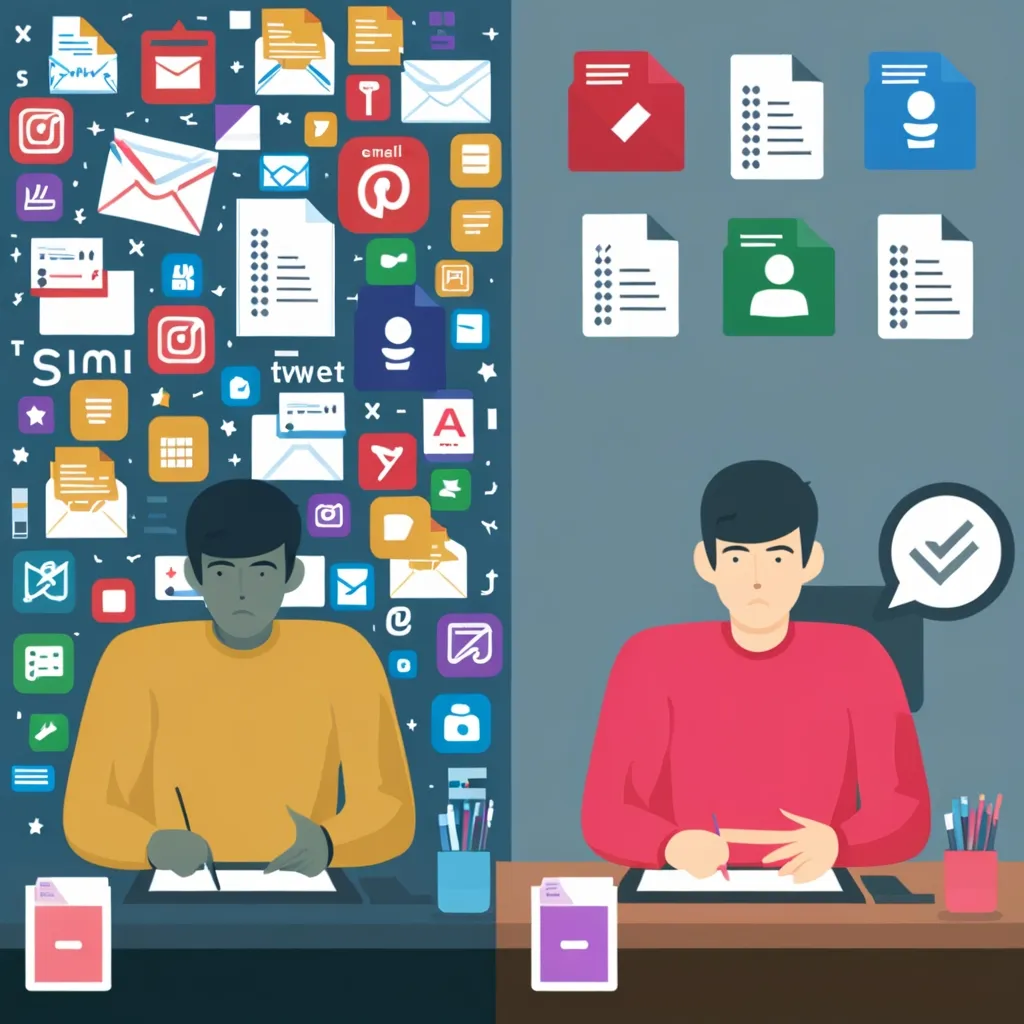In today’s frenzied world, handling our schedules effectively has become super important. One of the biggest productivity killers out there is something known as context switching. Picture it as that annoying habit of jumping between tasks, apps, or projects. This constant jostle isn’t just a minor irritant; it can tank your productivity and crank up your stress levels. Enter task batching—a solid technique to tame this chaos.
Context Switching: A Sneaky Productivity Killer
Context switching is when you flip-flop your attention between different tasks or tools. Think of it as the bane of our digital existence, with notifications, emails, and social media bites tearing at your focus like hungry wolves. For instance, you’re working on a project, but then bam! A Slack message from your boss asking for a status report crashes your mindfulness party. You ditch the project to respond, but then get yanked again by an email notification. This back-and-forth is productivity poison.
The Hidden Costs of Context Switching
Each time you jump from one task to another, there’s a hidden cost involved—a “switching cost,” if you will. Some studies say this cost can slice away 20-80% of your productivity. If you’re fixated on one task, you’ve got a full tank of focus. But switch to another, and suddenly you lose significant chunks of your mental fuel. Quickly, this habit ratchets up stress and leaves your productivity in tatters.
What’s the Fix? Try Task Batching
Task batching helps by grouping similar tasks together and tackling them in tightly focused bursts. The idea is to reduce the mental load and brain drain that context switching brings. By clumping related tasks together, you can achieve a sweet spot of focus, efficiency, and mental flow.
How Task Batching Rolls
Imagine launching your day with a dedicated chunk of time just for emails. Once that inbox is tamed, you move to another batch—say, phone calls or a specific project. This smooth transition between activities within a batch means less context switching. For developers, this could mean a morning coding spree and an afternoon filled with meetings. No more lurching between coding zen and communication chaos. This way, you dive deeper into each task, hitting that productivity nirvana known as “flow.”
Task Batching: The Perks
Batching your tasks comes with a buffet of benefits:
- Increased Focus: With grouped tasks, you can keep your focus unbroken for longer stretches. This amps up both the quality of your work and your efficiency.
- Reduced Stress: Jumping between tasks is exhausting. Task batching smooths out your workflow, turning down the stress and making you feel like you’re in the driver’s seat.
- Improved Productivity: Less context switching means less mental energy wasted. Your focus gets to take a long, undisturbed walk, letting you get more done in less time.
Getting Started with Task Batching
To kick off task batching, you need to figure out all the tasks you usually juggle and group them together. Here’s a roadmap:
- Identify Your Tasks: List out everything you need to do daily or weekly—emails, projects, the works.
- Group Similar Tasks: Categorize these tasks into neat batches based on their nature. Group all communication-related tasks together, while project tasks could form another batch.
- Schedule Your Batches: Use time blocking to reserve dedicated slots for each task batch. This ensures you have uninterrupted focus throughout your day.
- Avoid Overloading: Don’t cram too many tasks into one batch. Aim for focused batches that keep your concentration intact without overwhelming you.
- Stay Adaptable: Understand that your workflow isn’t set in stone. Be flexible enough to adjust your batches to handle unexpected tasks or shifting priorities.
Task Batching Meets Other Productivity Hacks
For even better results, team task batching with other productivity tricks:
- Pomodoro Technique: Use the Pomodoro method within your task batches. With focused work intervals followed by short breaks, this technique sharpens your concentration and prevents burnout.
- Time Blocking: Set aside time slots in your calendar specifically for your task batches. Uninterrupted work sessions are the name of the game.
- Templates and Checklists: Speed up your workflow by using templates and checklists. They reduce the mental effort of switching between tasks.
Fighting the Multitasking Urge
One big hurdle in task batching is resisting the urge to multitask or jump tasks during your focused periods. Here are some strategies to help you stay the course:
- Do Not Disturb Modes: Give yourself the green light to use ‘Do Not Disturb’ settings or calendar blocks for undisturbed work. Less interruption leads to better flow.
- Streamline Tools: Simplify your tools to limit context switching. Integrating your tools helps maintain focus and reduces time spent bouncing between apps.
- Establish Routines: Build routines that cut down “attention residue.” Create clear breaks between tasks to dive fully into the next activity.
The Magic of Flow State
When you’re locked into a single task for a decent stretch without interruptions, you can hit a flow state—a high-level productivity and focus zone where work feels almost effortless. Task batching helps you tap into this magical state by cutting down on those pesky distractions and interruptions tied to context switching.
Building Habits and Saving Mental Energy
By consistently batching similar tasks, you form habit loops that make task batching feel second nature. As these habits strengthen, keeping focus and dodging distractions takes less effort. This saves mental energy, letting you focus longer without frequent breaks.
Wrapping Up
Task batching is a straightforward yet mighty technique to boost productivity and lower stress. Grouping similar tasks helps you sidestep the cognitive costs of context switching, unlock the flow state, and turbocharge your overall productivity. Whether you’re a busy bee, a student, or just someone wanting to seize control of your time, mastering task batching can be a game-changer for productivity and well-being. Take the plunge today and batch your tasks—it’s time to become a more efficient, focused, and productive version of yourself.






